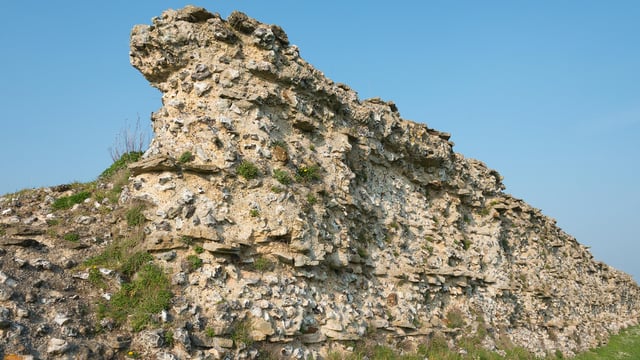Roman Sites in England
During their occupation of Britain, a period of some 400 years, the Romans did much to change the physical landscape of the country. Besides their famously straight roads and many towns, they built luxury rural villas and military forts. Supply towns along Hadrian’s Wall and defensive forts, the so-called Saxon Shore Forts, along the south east coast of England. The Antonine Wall in Scotland, and a network of forts and fortlets in Wales. Nearly 2,000 years later theer are numerous and varied Roman ruins scattered throughout the country. Many of which are accessible to the public. These are either manged privately or by national bodies, such as the National Trust or English Heritage.
Chester Roman Amphitheatre
Dating from the 1st century AD, the Chester’s amphitheatre is the largest known stone amphitheatre in Roman Britain. It was located southeast of the legionary fortress, and used for both entertainment and military training. Recent excavations revealed that by 120 AD the amphitheatre was all but abandoned, but it was bought back into use in around 275 AD following some rebuilding. It remained in use until about 350 AD. Today only two fifths of the amphitheatre is exposed, the rest lies unexcavated.

Keston Roman Villa & Tombs
On the edge of Greater London in the small leafy village of Keston, archaeologists found the remains of a 3rd Century AD Roman villa and at least two tombs and many individual graves. Excavations started in the late 1960s and carried on until the 1990s. For conservation reasons the villa was covered up following excavation, but the tombs were left exposed. The ruins are on private property and are usually only accessible to the public on open days held in September each year.


London Mithraeum Bloomberg SPACE
A chance discovery in 1954 during post-war archaeological excavations led to the discovery of the Roman mithraeum. The temple dedicated to Mithras was built in the 3rd century AD. During the construction of Bloomberg’s European headquarters archaeologists found numerous Roman artefacts. Including over 400 writing tablets, one being the first recorded reference to London. A selection of these are on display along with a spectacular and engaging presentation of the mithraeum.

London's Roman & Medieval City Wall
After nearly 2,000 years sizeable fragments of the wall that once defended the Roman port of Londinium still remain. The wall was built in about 200 AD, and along with Hadrian’s Wall and the network of Roman roads it was one of the largest architectural features to have been built by in Britain by the Romans. It was maintained and rebuilt by successive Medieval Londoners, and today the various fragments are incorporated into the contemporary architecture and layout of the City of London.

London's Roman Amphitheatre
The east gate the London’s Roman amphitheatre was discovered underneath the Guildhall Art Gallery in 1985 during the construction of a building to replace the gallery building that was destroyed during World War II. These meagre remains have since been conserved in situ for visitors in the basement of the art gallery, next to London’s historic Guildhall. An innovative presentation adds to the archaeological remains to give you an idea of how 7,000 spectators would have been seated on tiered wooden seats.

Roman Silchester – Calleva Atrebatum
The completely buried remains of the Roman town of Calleva Atrebatum, near present day Silchester, are still surrounded by what are considered to be some of the best preserved Roman town walls in England. Originally an Iron Age oppidum, the settlement was first occupied by Romans in about 45 AD and then abandoned by the 5th century. Outside the polygonal walls a relatively well preserved, albeit overgrown with trees and shrubbery, amphitheatre can be visited. There is a car park at St Mary’s church, from where it is easy to visit the amphitheatre and see the walls.


The City Wall at Vine Street
In the basement of Emperor House, on Vine Street, is a part of the 4th century wall that surrounded the Roman city Londinium. A small section of the wall ( 10 m long and 3 m high) still stands along with the foundations of a Roman bastion tower. Originally excavated by archaeologists in the 1970sand 1980s, and studied again in 2012 the remains of the London Wall ae now the centrepiece of a gallery space and café. Besides the wall, a number of artefacts recovered during the excavations are on display. Entry to the gallery is free to anyone, but you are required to book in advance on the website. The venue is open everyday except public holidays.











